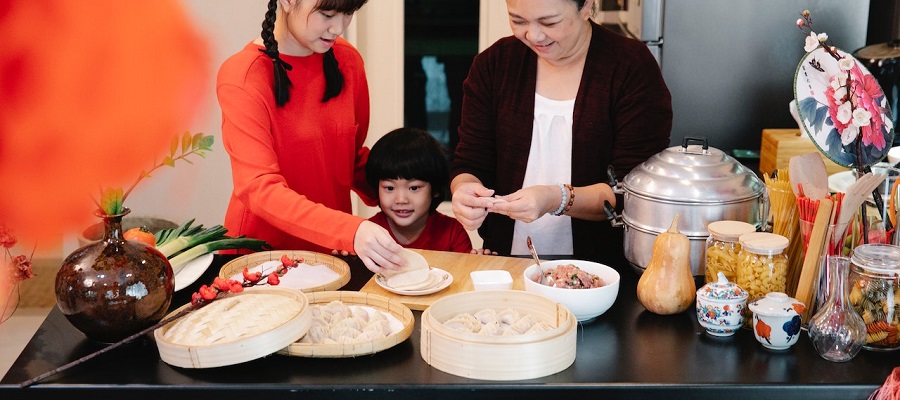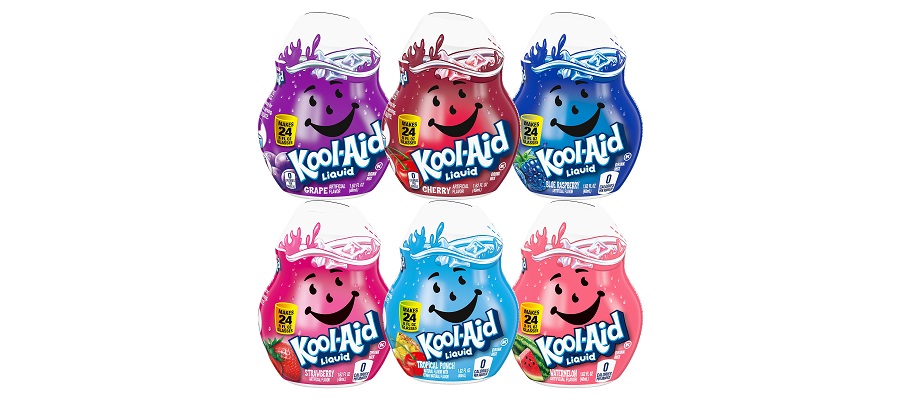Chinese cuisine is one of the most diverse and rich cuisines in the world, with a history dating back thousands of years. It is heavily influenced by the country's geography, climate, and cultural customs. Chinese cuisine can be broadly divided into eight regional cuisines: Cantonese, Szechuan, Hunan, Jiangsu, Zhejiang, Fujian, Anhui, and Shandong. Each region has its own unique style of cooking and ingredients.
One of the key characteristics of Chinese cuisine is the use of a wide variety of ingredients and cooking methods. Some of the most commonly used ingredients include rice, noodles, seafood, poultry, pork, beef, tofu, and various vegetables. Chinese cuisine also makes extensive use of spices and herbs such as ginger, garlic, scallions, and cilantro.
Some popular Chinese dishes include Kung Pao chicken, Peking duck, hot and sour soup, and fried rice. Kung Pao chicken is a spicy dish that originated in the Szechuan province of China, made with chicken, peanuts, vegetables, and chili peppers in a spicy sauce. Peking duck is a dish that has been enjoyed in China for centuries and is made by roasting a whole duck until the skin is crispy and then it is served with thin pancakes, scallions, and a sweet bean sauce. Hot and sour soup is a popular Chinese dish that is known for its combination of spicy and sour flavors, made with ingredients such as tofu, mushrooms, and bamboo shoots. Fried rice is another popular Chinese dish that is made by stir-frying rice with a variety of ingredients such as vegetables, meat, and eggs.
In addition to these popular dishes, there are many other types of Chinese food such as dim sum, dumplings, and noodle dishes. Chinese cuisine also has a strong tradition of food preservation techniques such as salting, pickling, and drying, which allow ingredients to be kept for long periods of time. Chinese food culture also includes traditional customs such as the Chinese New Year, where certain foods are eaten to bring good luck and prosperity in the coming year.
In conclusion, Chinese cuisine is known for its diverse flavors, ingredients and cooking methods, and there are countless different dishes to try and enjoy. From spicy Szechuan dishes to Cantonese seafood, it offers a wide variety of options for food lovers all around the world.
What is the most popular Chinese dish?
It is difficult to pinpoint one specific Chinese dish that is the most popular as it can vary depending on the region and individual tastes. However, some of the most well-known and popular Chinese dishes include Kung Pao chicken, Peking duck, hot and sour soup, and fried rice.
Kung Pao chicken is a spicy dish that originated in the Szechuan province of China. It is made with chicken, peanuts, vegetables, and chili peppers in a spicy sauce. Peking duck is a dish that has been enjoyed in China for centuries and is made by roasting a whole duck until the skin is crispy. The meat is then served with thin pancakes, scallions, and a sweet bean sauce.
Hot and sour soup is a popular Chinese dish that is known for its combination of spicy and sour flavors. It is made with ingredients such as tofu, mushrooms, and bamboo shoots, and is often served as a starter or side dish. Fried rice is another popular Chinese dish that is made by stir-frying rice with a variety of ingredients such as vegetables, meat, and eggs.
In addition to these popular dishes, other Chinese dishes that are enjoyed by many include sweet and sour pork, dumplings, chow mein, and lo mein. Chinese cuisine is known for its diverse flavors and ingredients, and there are countless different dishes to try and enjoy. From spicy Szechuan dishes to Cantonese seafood, the Chinese cuisine offers a wide variety of options for food lovers. Some of the most popular Chinese dishes are also enjoyed and adapted by other countries, such as Kung Pao Chicken, Peking Duck, fried rice, and hot and sour soup, which can be found in Chinese restaurants all over the world.
What are the main ingredients in Kung Pao chicken?
The main ingredients in Kung Pao chicken typically include:
- Chicken: usually boneless and cut into small cubes
- Peanuts: roasted and unsalted
- Vegetables: such as bell peppers, zucchini, and onions
- Chili peppers: dried or fresh, for the dish's signature spicy kick
- Garlic and ginger: for added flavor
- Szechuan peppercorns: for a unique numbing sensation in the mouth
- Soy sauce, rice vinegar, and sugar: for seasoning and balancing the flavors
- Corn starch: used as a thickener for the sauce.
Additionally, some recipes may include additional ingredients such as scallions, sesame oil, and chicken broth. The dish is typically stir-fried, making it a quick and easy to prepare dish.
What are some popular Chinese dim sum dishes?
Some popular Chinese dim sum dishes include:
-
Har gow: also known as shrimp dumplings, these are small steamed dumplings filled with shrimp and sometimes vegetables.
-
Siu mai: open-topped steamed dumplings filled with pork and shrimp.
-
Char siu bao: steamed buns filled with barbecue pork.
-
Cheung fun: rice noodle rolls filled with shrimp, pork or beef
-
Jiaozi: boiled or steamed dumplings filled with meat, seafood or vegetables
-
Egg tarts: sweet pastry crust filled with a smooth custard filling
-
Taro cake: a savory dish made from taro root and ground pork
-
Fried sesame balls: deep-fried dough balls coated in sesame seeds and filled with sweet lotus or red bean paste
-
Sticky rice in lotus leaf: glutinous rice steamed in lotus leaves with different fillings like pork, chicken or vegetables
-
Dan tat: baked pastry filled with a sweet custard filling.
Dim sum is traditionally served as a brunch dish and is often accompanied by tea. It is a popular way to socialize with friends and family and is enjoyed in restaurants, tea houses and traditional Chinese eateries.
What are some popular Chinese vegetarian dishes?
Some popular Chinese vegetarian dishes include:
-
Mapo Tofu: a spicy dish made from tofu, vegetables, and a spicy bean sauce.
-
Kung Pao Tofu: a vegetarian version of Kung Pao chicken, made with tofu instead of meat, peanuts, vegetables, and chili peppers in a spicy sauce.
-
Buddhist Delight: a dish made of mixed vegetables and bean curd, often served in Buddhist temples.
-
Ma Po Eggplant: a dish made from eggplants, vegetables, and a spicy bean sauce.
-
Hot and Sour Soup: a popular Chinese dish that is known for its combination of spicy and sour flavors, made with ingredients such as tofu, mushrooms, and bamboo shoots.
-
Zha Jiang Mian: a dish made from thick wheat noodle with a bean sauce made from fermented soybeans and mixed with vegetables
-
Stir-Fried Vegetables: a dish made from mixed vegetables stir-fried with garlic, ginger, and oyster sauce.
-
Vegetarian dumplings: steamed or boiled dumplings filled with vegetable and mushroom
-
Tofu and vegetable clay pot: a dish made from tofu, vegetables, and a variety of seasonings, cooked in a clay pot.
-
Vegetarian Chinese hotpot : a dish made from mixed vegetables and mushroom, served in a hot pot.
Chinese cuisine has a long tradition of vegetarianism, and many of its dishes are adaptable for vegetarians by substituting meat with tofu, mushrooms, and other plant-based protein. Chinese vegetarian dishes are often enjoyed by Buddhist and vegetarians, and also by meat-eaters looking for a healthier alternative.
What are some popular Chinese seafood dishes?
Some popular Chinese seafood dishes include:
-
Cantonese Steamed Fish: a dish made by steaming a whole fish with ginger, scallions, and soy sauce.
-
Shrimp with Lobster Sauce: a dish made with shrimp stir-fried with a savory sauce made from eggs, ground pork, and fermented black beans.
-
Kung Pao Shrimp: a dish made from shrimp, peanuts, vegetables, and chili peppers in a spicy sauce, similar to Kung Pao chicken.
-
Scallops with Black Bean Sauce: a dish made with scallops stir-fried with ginger, garlic, and fermented black beans.
-
Stir-Fried Squids: a dish made from squid stir-fried with vegetables, garlic, and ginger.
-
Fish filet with soy sauce: a dish made from fish filet, coated with a sweet soy sauce, and stir-fried with ginger, garlic, and scallions.
-
Clams with Black Bean Sauce: a dish made with clams stir-fried with ginger, garlic, and fermented black beans.
-
Crab with Ginger and Scallions: a dish made from crab stir-fried with ginger, scallions, and soy sauce.
-
Salt and Pepper Shrimps: a dish made from shrimps, deep-fried and stir-fried with salt, pepper, and garlic.
-
Seafood hotpot : a dish made from mixed seafood, served in a hot pot.
Chinese cuisine has a long tradition of seafood dishes, and many of them are enjoyed in coastal regions where seafood is abundant. Chinese seafood dishes are known for their freshness, and many of them are cooked quickly to retain the flavors and texture of the seafood. They are often served with rice, noodles or vegetables.
What is the traditional Chinese method of food preservation?
The traditional Chinese method of food preservation includes a variety of techniques such as salting, pickling, smoking, and drying. These methods have been used for centuries to preserve food and extend its shelf life, allowing people to have access to a variety of ingredients all year round.
Salting is one of the oldest and most traditional methods of food preservation in China. Foods such as fish, meat, and vegetables are coated in salt, which helps to draw out moisture and inhibit the growth of bacteria. This method is often used for meats, seafood and vegetables.
Pickling is another popular method of food preservation in China. Vegetables such as cucumbers, radishes, and cabbage are typically pickled in vinegar, salt, and spices. This method not only preserves the food, but also imparts a unique flavor.
Smoking is a method used to preserve meat and fish. The smoke from burning wood imparts a unique flavor to the food and also helps to inhibit the growth of bacteria.
Drying is another traditional method of food preservation, which is commonly used for fish and meats. The food is left to dry in the sun, which removes moisture and makes it much more durable.
These traditional methods of food preservation have been passed down through generations and still play an important role in Chinese cuisine. They allow for a variety of ingredients to be used in cooking all year round, and also contribute to the unique flavors and textures of Chinese dishes.


